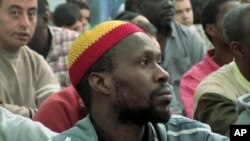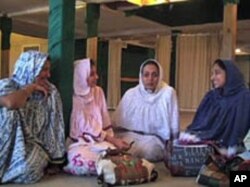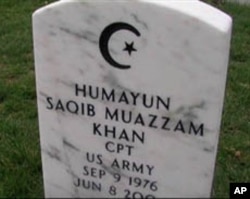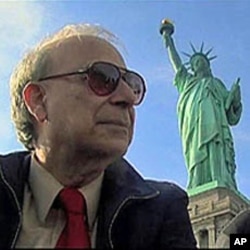An estimated seven million Muslims live in the United States today.
But for many Americans, Islam is associated with extremists like Osama bin Laden.
To shed light on this religious group and counter mutual distrust, American University Professor Akbar Ahmed and his team of young researchers traveled to more than 75 American cities.
Those journeys are chronicled in a documentary, and an accompanying book, called "Journey into America."
Negative perceptions
"We don't like the Muslims, that is all," says one American woman in the documentary. "They don't believe in our Jesus."
"Their book tells them to kill," says another man.
Statements like that prompted Ahmed and his team to craft a documentary around two themes: what it means to be a Muslim in America and what it means to be American especially after the September 11 attacks.
"Remember before 9/11, they came here and considered this the best place in the world to be a Muslim," says Akbar. "After 9/11, they faced many challenges."
Khadija Rivera, a Muslim who wears a headscarf, was one who faced obstacles.
"They were spitting on me," she says. "Some people told me to remove the veil for safety. I refused because that sounded like a sign of defeat."
Challenging stereotypes
Ahmed says "Journey into America" revealed that many Americans lack information about Islam.
"Many thought that Islam preaches violence through the Koran. Many think that Islam suppresses women and treats women very badly."
The documentary attempts to shatter stereotypes about Muslim-American women. In one scene, scarf-wearing women are asked their occupations. They turn out to be a pharmacist, pediatrician, real estate agent and financial analyst with Exxon-Mobil.
Hailey Woldt, a researcher on the documentary, wanted to see how Americans in a small southern town would react to a veiled woman. She put on an abaya -- an Islamic robe -- and went to a crowded restaurant.
"I walked in and everyone in the restaurant looked at me, put their forks down and had their mouth open and for a minute they were silent," she says. "But after that everyone went back doing what they normally do."
Lines of communication
Woldt is convinced American Muslims are fitting in well.
"All they need to do now is simply communicate that Islam is a part of America and that they are bringing something, adding something, to the American culture," Woldt says.
Such as giving their lives for their country. At Arlington National Cemetery, where U.S. servicemen and women are buried, the team videoed graves of Muslim-Americans.
They also filmed Muslim-Americans in Dearborn, Michigan, Muslims at the oldest mosque in America in Cedar Rapids, Iowa and a Shi'ite congregation in New York City.
Muslim-Americans living the American dream are also featured. People like Munir Chaudry, who came to America in 1971 with $100 in his pocket, and now owns a company that offers jobs at his factory in Chicago.
"Factory workers as well as mechanical department, shipping and receiving, anybody with the right qualifications could move up to the supervisory positions," he says.
Ahmed believes integrating Muslims in America is what the founding fathers had in mind.
"A statue at Jefferson's University of Virginia carries a tablet which reads 'Religious Freedom 1786: God, Jehovah, Brahma, Allah,'" he says. "Just think of it, Jefferson owned a Koran and welcomes the believers of Allah (Arabic for God)."
At the Statue of Liberty, the historic gateway to America, the documentary team concludes that the United States must revive its principle of pluralism to integrate American Muslims.













